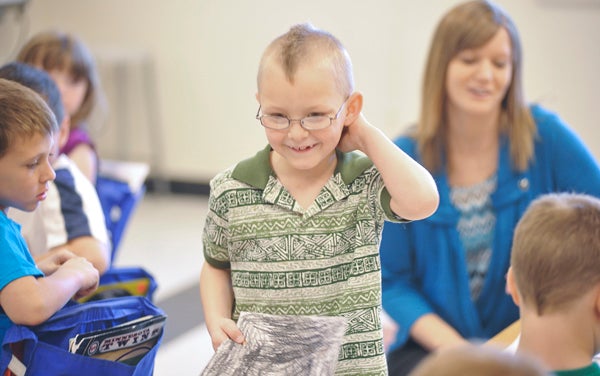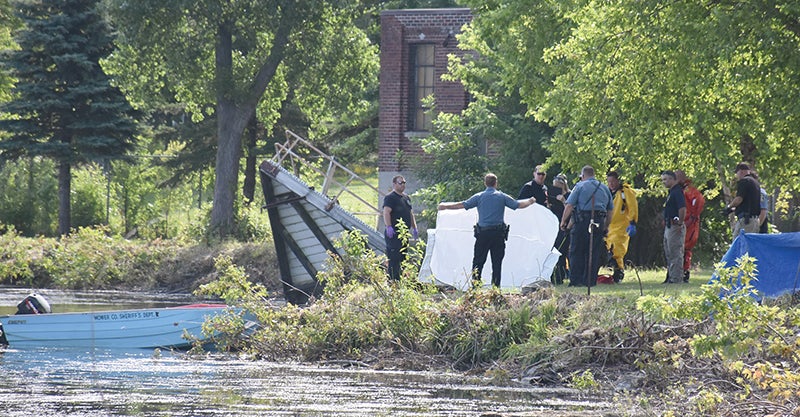Open for a choice
Published 8:00 am Monday, April 30, 2012

Lyle first-grader Jacob Sarauer heads back to his desk to complete his drawing of outer space Thursday. He needed to add an alien. Sarauer is one of 88 kids from Austin who have open-enrolled to Lyle. - Eric Johnson/photodesk@austindailyherald.com
Decades later, bill still allows parents to select a school
Jacob Sarauer likes going to school in Lyle. The first-grader learns in a class of 12 at Lyle Elementary School, according to his aunt, Lisa Cheng. A class that small means Jacob gets more face-to-face time with teacher Michele Frank.
“He’s extremely smart, so it doesn’t help that he gets bored in school,” Cheng said.
Yet Sarauer lives with Cheng and her husband in Austin. He’s one of 78 students who transfer from Austin to Lyle, part of a school choice reform system more than two decades old and one of the key factors why rural schools survive and even thrive as more people flock to larger city centers.
“Choice for parents is critical,” said Austin Public Schools Superintendent David Krenz.
Though Krenz’s current district doesn’t exactly benefit from open enrollment — most larger districts don’t, according to area educators — Krenz has worked at smaller districts and has seen how smaller districts can benefit from open enrollment.
Minnesota was the first state to require open enrollment in the late 1980s as a school reform policy championed by then-Gov. Rudy Perpich. The North Star State is one of 17 states with a required school choice policy that allows students to transfer out of the school district in which they live.
“That was designed to spur innovation and spur schools to improve, and to be able to have parents have choices among schools,” said Dr. Fred Nolan, executive director of the Minnesota Rural Education Association. As Nolan and other area educators note, more parents tend to move their students out of a larger district and into a smaller one, mainly for things like smaller classes and a more teacher-student individualized contact.
“Despite their size, there are parents who choose [smaller schools],” Nolan said. “They have a perception that it’s safer, and it has more opportunities for their school children.”
It’s that choice that has allowed rural schools in some areas to thrive even as demographic shifts across greater Minnesota leave more towns with declining populations. U.S. census data shows more people moving toward urban areas, a decades-long trend that shows no sign of reversing.
‘It was a personal decision’
Jacob may not remember all of what he learned in school last Tuesday, but he was excited to learn about water and the way people use it. Cheng is glad Jacob has adjusted so well to Lyle Elementary. He didn’t have issues when he was a kindergartner at Woodson Kindergarten Center, but there were a lot of students and larger classrooms of more than 20 students.
“How much time can actually be spent in such large classrooms?,” Cheng asked. “It was a personal decision because of the number of students … the big class sizes in Austin.”

Lyle Elementary School first-grader Jacob Sareuer is one of more than 200 students who live in Austin yet open enroll in area schools. - Trey Mewes/trey.mewes@austindailyherald.com
Austin schools are well known for being one of the few outstate districts with a booming student population, as more than 5,000 students are expected in Austin by 2019. That’s a little big for Cheng, though she went to school in Austin. She found big districts like Austin weren’t right for her family, as she sent her children to Hayfield Public Schools when they were growing up.
“You still have your preps, you have your peer pressure, but … if you come in jeans and a T-shirt, you’re fine,” she said.
What’s more, Jacob feels comfortable in Lyle because he has found several classmates who live with their aunts and uncles or grandparents just like him, which Cheng said has helped.
“It’s been what we expected it to be,” Cheng said.
That’s important to Lyle’s interim superintendent/principal Joe Guanella, who sees attracting students and residents alike as a positive for not only the school but the community.
“It’s all part of a package,” he said. “For a small rural town, for any town, to be successful you have to attract people. A big part of that is a good school system that’s offering parents what they’re looking for.”
Lyle is no slouch when it comes to attracting students, as the district has 89 students who transferred in — or more than a third of its total student population — from other districts last year. Yet the district also had 61 students who transferred out of Lyle, with 22 to non-public schools last year as well.
School districts in Minnesota get almost $5,300 for each student it serves, with some districts getting a much higher amount based on a variety of factors. Though the aid amount changes depending on the student — districts receive more money for a high school student than an elementary student — most districts receive $7,000 to $8,000 on average per student. For Austin, open enrollment means a slight loss in potential state aid. The district had 85 students transfer in last year, with 153 who transferred out. Since the district receives about $8,000 per student, according to district officials, Austin loses out potentially on about $544,000. Still, Austin will receive $55 million in state aid this school year.
Minnesota doesn’t require school districts to provide transportation to out-of-district students, but school districts like Lyle bus students from Austin throughout the year. Though at first glance it seems transportation costs would outweigh potential aid gains from more students, educators say the additional aid vastly offsets already built-in transportation costs.
“Your fixed cost of your bus and your driver you’re going to pay no matter what,” Nolan said. “It’s at least a 10 to 1 return on investment,” that greatly increases with more out-of-district students on a bus route, he added.
Yet open enrollment is just one piece in the changing rural education system in Minnesota and across the nation. As more and more people move to urban areas, rural schools are going to have to find ways to market their strengths and save on costs. Southern Minnesota is already pioneering rural education with the consortium agreement between Lyle, Grand Meadow Public Schools and Glenville/Emmons Public Schools. Each school shares a business manager and may soon share a superintendent once more, along with various education components and programs.
“You’re going to see more close cooperative arrangements like that,” Nolan said.
That means students like Jacob and guardians and parents like Cheng will continue to have options when it comes to school.





